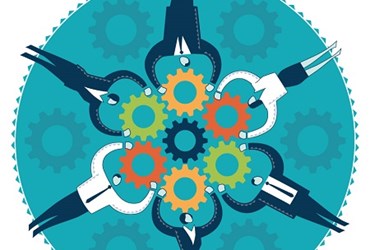Building Stronger Customer Relationships At Wodify
A conversation with Ameet Shah, Wodify

Ameet Shah is CEO and creator of Wodify, an all-in-one gym management platform with thousands of customers across the globe. Its platform processes more than half a billion dollars in payments annually, but it hasn’t always been smooth sailing for Shah’s company. That’s why he invested $500,000 in a “culture week” aimed at transforming the company’s culture and values.
What follows is a snippet of the interview with Shah focusing on customer success that didn’t fit into the story linked to above in Software Executive magazine. He explains how Wodify is building a customer success team and measuring their effectiveness.
Q: How are you evaluating the success of both your software and the effectiveness of your customer success team?
Shah: Last year we decided the number one thing we needed to do was build stronger relationships with our customers. Over the prior six months we had doubled the size of our customer success team. We plan to eventually triple it, as well as implement account management for a subset of our customers.
What we found is that, while most of our customers are extremely gifted and passionate about their business, they’re new to business and technology. Technology can be really intimidating to them and we need to be there and understand their business objectives and then actually help them get there, whether it be software related or not.
We anticipate our customer success team being measured on some different KPIs — one of them being churn, another being upselling — because we’ve got a suite of products. We have our own internal revenue and profitability goals and tend to be a little bit conservative. We’re debt-free, we’re cash-heavy, and that gives us some comfort to ride out ups and downs.
Q: What is your customer success team’s strategy for increasing adoption?
Shah: I’ve watched enterprise companies invest millions, sometimes tens of millions of dollars into software systems only to see them not be adopted. When we built Wodify, user adoption was really key to us. When I implemented ERP and CRM [as an integrator before founding Wodify], I always tried and keep the process of data collection really minimal in phase one so we could get high adoption.
Then, once you get the adoption, it’s easy to turn the crank a little bit and say, “Hey, can I collect a little bit more data? Can I test your process this way?” What I’ve found is if you’ve made the processes and the data collection so overwhelming, people just didn’t adopt it.
Q: What sparked this initiative to invest in building a more robust customer success team?
Shah: I would love to tell you that we don’t churn any customers, but that’s not true: We do churn some. But something we heard customers say in exit interviews was, “Well, I’m switching to this platform because they offer this feature and you don’t.” Oftentimes, we would say, “But we do offer that feature. Actually, our feature works better than said partner.” It dawned on us we had this adoption problem, and we sent out a lot of in-app communication, a lot of emails.
I think what we want to do is go back to basics. We had really good relationships with our customers. We knew our customers by name when we first started out. Today I can’t tell you all 5,000 of them. In the early days of the company, we went above and beyond from a customer service standpoint without it being scripted, and we’ve started doing that again. Our customer success team today just didn’t know what their limits were and weren’t. They just thought, “Well, we’ll just answer these tickets.”
One time, for example, our customer was opening a new gym on a Monday, and by Saturday the TVs [that would showcase Wodify’s software] hadn’t been delivered. One of our team members called Best Buy near that gym, found two similar TVs, paid for them and told our customer, “I know this is a little bit unorthodox, but I’ve already bought you two new TVs 1.2 miles from your gym. If you could drive over and get them, you can open your gym on Monday and we’ll worry about the other TVs later.” Of course, that customer loved us. We started doing more of that and just trying to really understand their problems, saying, “What can I do, no matter what it is, within my power to help these people?”
So, today, we’re really focused on saying, “Hey, if we took our existing customer base and just helped them better leverage the existing software we have, without relaying one more line of code, would they be more successful?” And the answer is “yes.”
We not only need to do that now, but long-term. We need to make sure it’s a pillar of our success, to show that we build software and that we demonstrate, teach, and educate our customers on the power of the software and why it’s meaningful for them.
